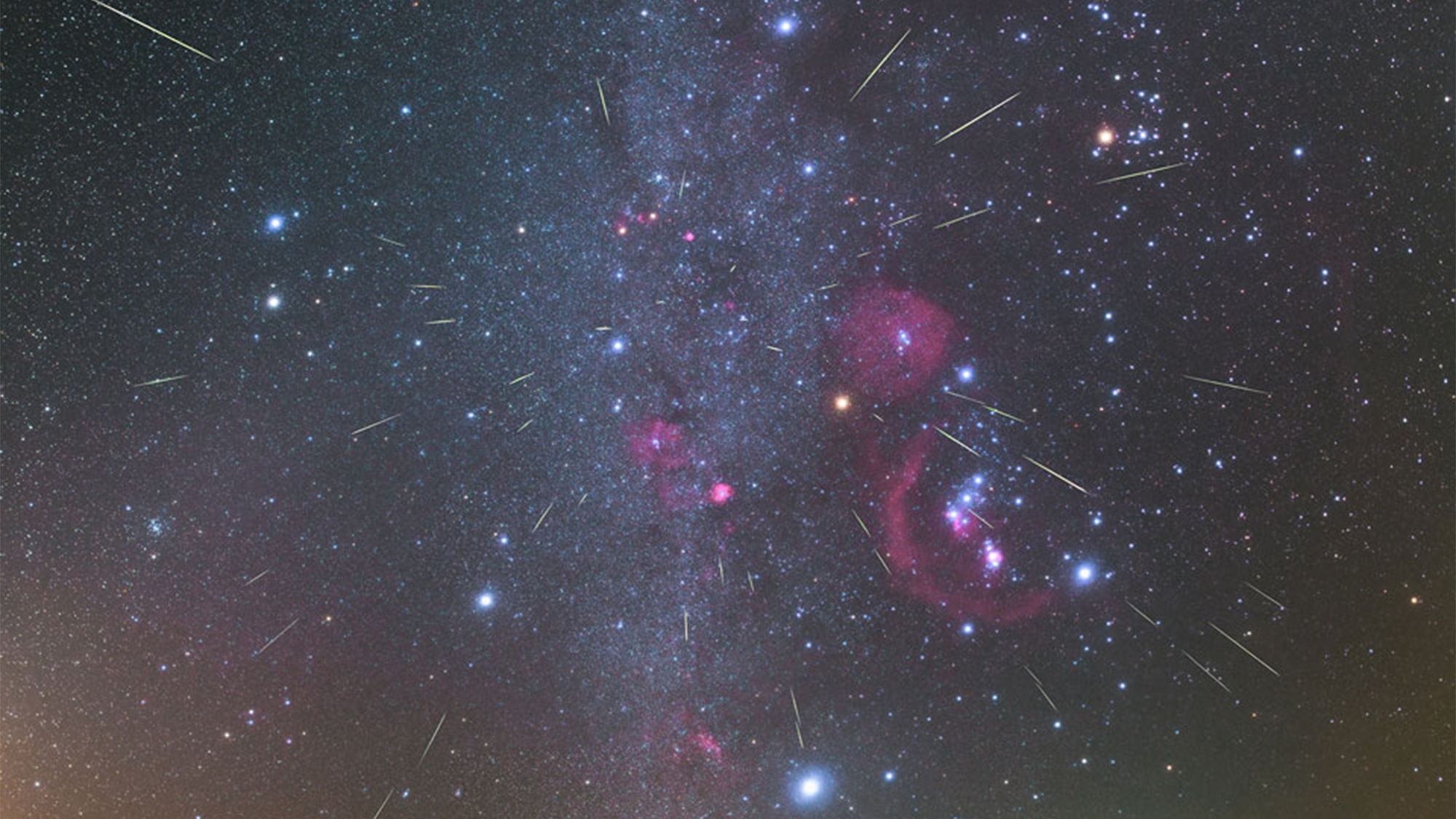

| October 14 | Annular Solar Eclipse |
| October 21-22 | Orionids Meteor Shower Predicted Peak |
| October 23 | Venus at Greatest Western Elongation |
| October 28 | Full Hunter’s Moon and Partial Lunar Eclipse |
The Northern Hemisphere has officially passed the autumnal equinox. The days are getting shorter and colder, but the night sky remains as hot as ever. This month is going to be a big one for cosmic events, with an exciting annular solar eclipse, meteor showers, and clearer stargazing as the temperatures and humidity drop. Aurora activity can also really pick up this time of year, for those lucky enough to be at the right latitudes to catch a glimpse of the northern lights. Here are some events to look out for this month. If you happen to get any stellar sky photos, please tag us and include #PopSkyGazers.
October 14 – Annular Solar Eclipse
Chances are you have heard about this one already. The moon will pass between Earth and the sun and cast a huge shadow on our planet in the process. With the right protective eyewear, it will be a sight to behold—the phenomenon produces a “ring of fire” as if the moon is outlined with flames.
Astronomers have calculated precisely when the best views will be where you are, so consult this list when scheduling an outing to safely check out the sky. The duration will range from little more than one minute to almost five, depending where you are located in its path. This eclipse has a 125-mile-wide path of annularity that will begin in Oregon at 12:13 p.m. Eastern Daylight Time. It will leave the US at about 1:03 p.m. EDT and head southeastward toward Central and South America.
October 21 and 22 – Orionids Meteor Shower Predicted Peak
The annual Orionid meteor shower is expected to peak on October 22 in a moonless sky, but the wee hours of the morning of October 21 could also yield some meteors. According to EarthSky, under a dark sky with no moon, the Orionids can produce a maximum of about 10 to 20 meteors per hour. On October 22, the moon will be setting around midnight, which means its light shouldn’t interfere with the shower. The best time to try and spot the shower is just after midnight into the early morning hours
October 23 – Venus at Greatest Elongation
In August, the planet Venus moved between the Earth and the sun and rose in the east. Venus will be farthest from the sunrise on October 23 and should remain visible in the morning sky until May 2024, where it will be a very bright “morning star.”
During this month’s greatest elongation, Venus will appear higher in the sky from the Northern Hemisphere than from the Southern Hemisphere. This is because of the steep angle of the path of the sun, moon, and planets in the mornings during the autumn months.
October 28- Full Hunter’s Moon and Partial Lunar Eclipse
The full Hunter’s Moon will reach peak illumination at 4:24 p.m. EDT on Saturday, October 28, but you can start to look for it on October 27. The Hunter’s Moon is always the first full moon after the Harvest Moon. According to the Farmer’s Almanac, the name originates as a signal for hunters to prepare for the upcoming winter to ensure that they have enough food. It is also when animals like the stars of Fat Bear Week are beginning to bulk up for a long winter’s hibernation, and animals may be easier to spot since fields are being cleared. Other names for October’s full moon include the Falling Leaves Moon or Binaakwe-giizis in Anishinaabemowin (Ojibwe) and the Someone Stores Food Moon or Yutekhway^he in Oneida.
Additionally, a partial lunar eclipse is predicted for this same day. Between 3:36 and 4:53 EDT, the moon will pass through the Earth’s shadow. The eclipse should be visible in any location where the moon is above the horizon at the time, including parts of Asia, Russia, Africa, Oceania, and Europe.
The same skygazing rules that apply to pretty much all space-watching activities are key this month: Go to a dark spot away from the lights of a city or town and let the eyes adjust to the darkness for about a half an hour.
